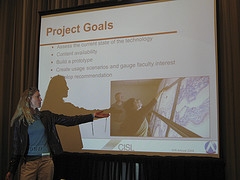 Major projects often require half-day or all-day meetings to get everyone in sync and plan the high-level steps needed to finish the effort. You could find yourself leading such a meeting and you might dread it. It doesn’t have to be painful. You might actually enjoy it.
Major projects often require half-day or all-day meetings to get everyone in sync and plan the high-level steps needed to finish the effort. You could find yourself leading such a meeting and you might dread it. It doesn’t have to be painful. You might actually enjoy it.
The grunts and sighs usually begin early in the morning after the attendees hit their smartphone’s snooze button for the tenth time. They’ve known about this day for weeks, but it’s finally arrived and they’re neither ready nor willing to participate in it—the dreaded all-day meeting. However, I’m here to tell you that your day doesn’t have to be that dreadful and that there are a number of things that you do to circumvent the agony of having to be in a room and stare at the same people all day. Unless you’re using web conferencing tools like GoToMeeting or collaboration software like Cage, yes, you will have to interact, face-to-face with your coworkers. But don’t panic, this could actually be fun.
1. BREAKS, BREAKS, BREAKS! Please don’t wait until you see your first dozer before you let everyone take a time out. Not only does it mean that your presentation isn’t interactive enough, but you also run the risk of letting someone make you angry because they fell asleep during something that you believe to be important. There are several kinds of breaks you can implement: coffee breaks, company provided-lunch breaks (avoid heavy lunches), physical-activity breaks (stretching activities like the ones found in Kaiser Permanente’s “healthy meeting” document, walks, silly dance routines).
2. New breakthroughs hardly ever come out of most meetings. So, in order to ensure that the ideas from your meeting manifest in your day-to-day work, capture action items. The website 99u.com recommends that at the end of these meetings you do what’s called a “Review of Actions Captured.” This is where people stand up and state how they intend to follow through on the ideas presented. According to the article, this kind of exercise “breeds a sense of accountability” by increasing your colleague’s expectations of you to deliver on your promise.
3. Speaking of standing up, you should suggest that part of your meeting be a “scrum” or “stand-up meeting.” It requires everyone to share both their progress and their problems with work-related issues. Usually these meetings take place daily for 5-15 minutes, but for the all-day meeting, it could last for up to 30 minutes. Not only does standing up for a while get your blood flowing, but it’s less formal than sitting down.
4. At times, you will have to be a part of online meetings and/or web conferences. If you’re the one that’s running the meeting, I suggest that you make it easier on everyone by using Microsoft Office 365. As this Verizon Wireless news article points out, instead of lugging your laptop into the meeting room, you can just as easily use the software on your tablet or iPhone—or similar device. “Many businesses across various industries already utilize Microsoft Office. Now those same tools, plus voice and video conferencing with Lync Online and collaboration with SharePoint Online, enable information to be easily accessed and shared virtually anywhere, on nearly any device on their network.”
5. Diversify your meeting by switching up your presentation style and getting the audience involved. If you want to lead a meeting in the traditional way—by talking from a bulleted agenda—you might not get the interest that you want. Instead, go from your notes, to a video presentation, to a guest speaker, to a web presentation, to a group activity like “Two Truths and a Lie,” to, well, you get the point. The element of surprise is every meeting organizer’s best friend.
Author Bio: Kevin Gannon is an aspiring online journalist with a desire to research and write about anything and everything—just as long as there’s a tech aspect to it. Also, while he prefers Apple products, he’s been warming up to the PC side of the world.
photo credit: Stanford EdTech via photopin cc
